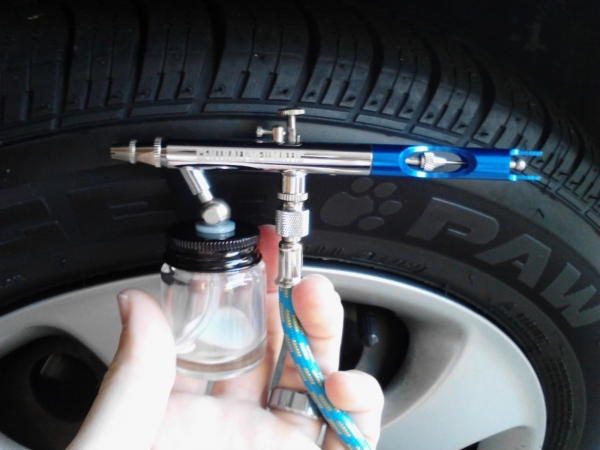EVER since Henry Ford started power-sliding his 539-cube Sweepstakes racer in 1901, burnout smoke has been white. Always. But this changed a while ago when a couple of enterprising competitors rocked up to an event with expensive imported tyres that made coloured smoke, blowing everybody away.
MORE Check out our Burnout videos
Enter Highway Tyres. They’re no strangers to the burnout scene, having supplied burnout maestro Steve Loader with his tyres of destructive choice for the past few years. And it was this relationship, combined with a competitor survey Highway conducted at the 2012 Ultimate Burnout Challenge (where more than 100 people expressed interest in buying coloured burnout tyres), that moved Highway to make these specialised tyres locally, giving birth to the Highway Max Coloured Smoke burnout tyre. Nowadays, the colour of a burnout competitor’s tyre smoke is as much a part of their signature as their machinery and array of tyre-frying tricks.
9
So what’s the secret behind coloured smoke? First, we need to explain why a regular tyre makes black smoke when you throw it onto a fire, yet produces white smoke when it’s flung around a doughnut pad.
For a tyre to ignite (ie burst into flame), it needs to be heated to at least 400 Celsius for some time. The physical act of burning the tyre not only releases the petroleum products used in its manufacture, it also releases a cocktail of toxic chemicals that includes benzene, lead, and even more esoteric toxins such as polycyclic aromatic hydrocarbons (PAHs) – all of which are extremely dangerous to breathe. It’s this concoction of burning oils and chemicals that creates the thick, dark cloud of smoke when a tyre combusts.
9
In a burnout, the tyre spins rapidly on the tarmac creating friction and so heat, though the temperatures reached are well short of what’s needed to ignite it. The heat created from the abrasive spinning action oxidises certain compounds within the rubber, which vaporise and are released as white smoke (the grey tinge often seen in burnout smoke is caused by fine rubber particles mixed in with the smoke).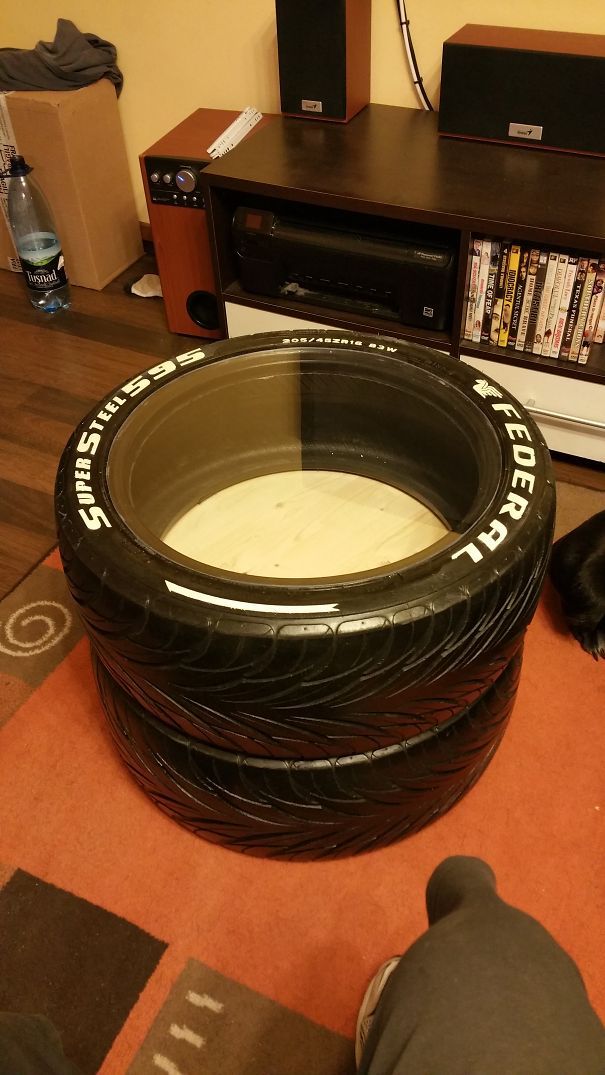
MORE Australia set to reclaim burnout world record at Summernats 32
The secret to creating coloured burnout smoke is to introduce particular compounds into the raw rubber that vaporise in a coloured plume at the temperatures created during a burnout. So what are these compounds? Well, Highway Tyres aren’t saying. Think of it as the tyre’s 11 secret herbs and spices.
9
As for how they’re made, Highway Tyres are Aussie remould specialists, and so their Coloured Smoke tyres are high-quality remoulds – which certainly helps keep costs down. To ensure they’re up to the brutality of a stout burnout, Highway specifically selects only the best carcases. The tread and sidewalls are buffed, removing just the right amount of material. A thin layer of fresh rubber is then applied to the sidewalls before the all-important, pre-coloured rubber is applied to the tread area. At this stage the tyre looks more like a slick. Also, the pre-coloured rubber looks identical to the non-coloured variety, so a coloured stripe is added to aid identification. From there the tyre goes into the segmented press where, over a period of 32 minutes at 155 Celsius, the tread pattern and sidewall are moulded.
From there the tyre goes into the segmented press where, over a period of 32 minutes at 155 Celsius, the tread pattern and sidewall are moulded.
| Watch next: The best gender reveal burnouts - Video
After a final inspection, which includes inflating to 65psi and spinning it up to check balance, it’s ready to destroy the nearest burnout pad. As Karl from the warehouse says, “This is one of the few industries where all the hard work goes up in smoke – we love it!”
Highway Max Coloured Smoke remoulds are just as tough and long-lasting as their regular remoulds – an attribute Steve Loader has proved time and again. However, Highway do not wish to promote illegal street burnouts. Therefore their coloured tyres are for competition only.
To add colour to your next skid, contact the experts at Highway Tyres. They have outlets in every state. Go to www.highwaymax.com.au to find out where.
Table of Contents
Congratulations! Someone knows the sex of the new baby (or is about to), and now it’s time to plan the big gender reveal.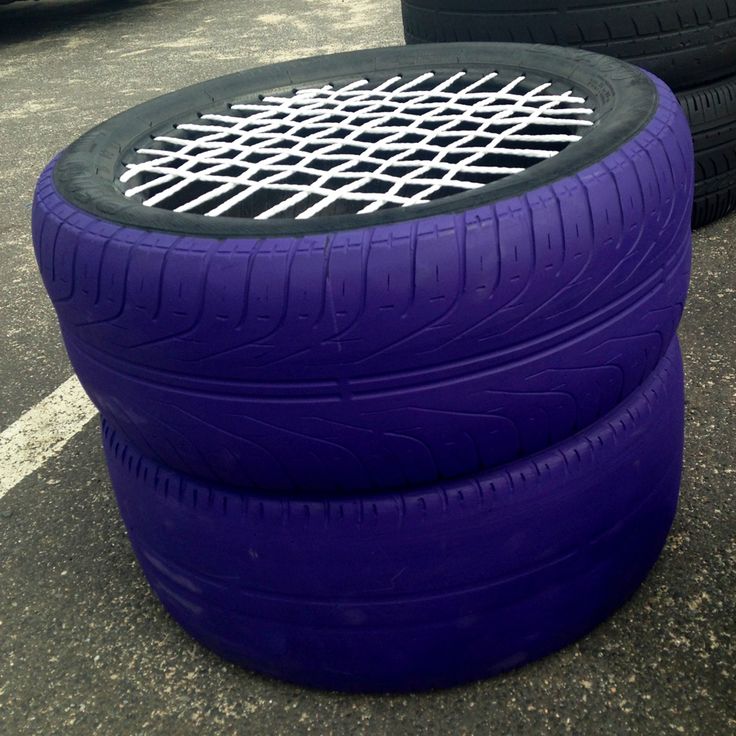 Maybe the parents are really into cars, or they love those videos of big clouds of colored car smoke revealing the gender of the baby. So you know you want to do a burnout at the party. But how do you get colored burnout smoke for a gender reveal?
Maybe the parents are really into cars, or they love those videos of big clouds of colored car smoke revealing the gender of the baby. So you know you want to do a burnout at the party. But how do you get colored burnout smoke for a gender reveal?
The answer is simple: you just need gender reveal burnout powder. But you might still be wondering how to use gender reveal burnout powder.
No problem! I’ll walk you through step-by-step how to use burnout powder. I’ll also discuss how many packs you need to get, what the best kind of powder is, and, well, how to do burnouts in general. This is one of my favorite methods of revealing a baby’s gender! It’s relatively safe and has a huge impact for a big onlooking crowd of friends and family.
via manny_oh on InstagramA tire burnout gender reveal is quite simple, but can be done in a number of ways. You could get burnout gender reveal tires that have special colored rubber compounds that are then spray-painted black to conceal the surprise until the burnout.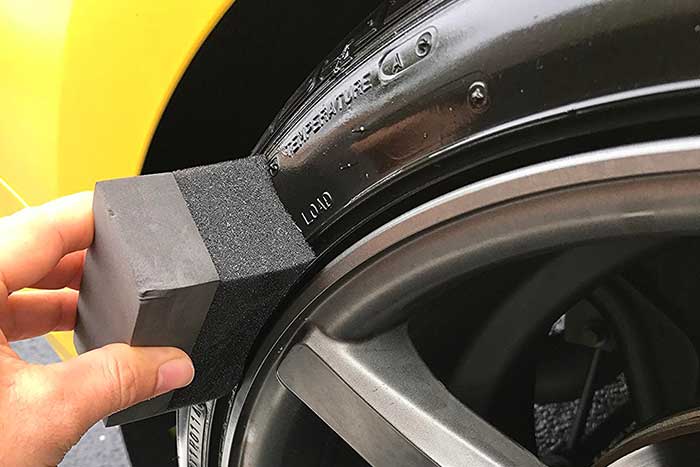
However, this method is very expensive (because tires in general are expensive). The burnout also takes longer to reveal the color. This is because you have to burn through the spray paint and enough of the tire to release a bright hue.
A cheaper and more commonly used method is to use colored powder concealed in special bags. Some are designed to stick to your tire. These bags burst during the burnout, spraying the powder out behind the car in a dramatic cloud. This method produces brighter colors and usually a bigger cloud of “smoke” (dust) as well.
Some people even put the colored powder directly into their exhaust pipes, either by itself or in addition to the packs under the tires.
Burnouts are illegal pretty much everywhere on public property. On private property, however (like your driveway), it isn’t specifically illegal… But you could still be charged with disturbing the peace of endangerment if a neighbor or police officer wanted to press the issue.
For this reason, it’s recommended that you do a gender reveal burnout on private property set far back from the main road. You should also do it during normal daytime hours, and not late at night when people are sleeping.
If you’re using the right kind of car (we’ll talk about that later) and you’re only planning on doing the one burnout, your car will likely be fine. This is not a guarantee, though. A burnout puts a ton of pressure on a car’s transmission, axles, and driveshaft. Enough strain can cause these things to break down.
A gender reveal burnout should be done by someone with the right kind of car, with experience doing burnouts, and only long enough to throw the powdered dust out behind the car (which will only be a couple of seconds). But know that you are always taking the risk of doing damage to your vehicle when doing a burnout.
Also, burnouts tend to be bad for your tires – so if possible, use a pair of old tires to make this kind of magic happen.
Tires are made of rubber, and rubber is a Group 1 carcinogen. Burning rubber releases airborne latex along with bits of carbon black, oil, sulfur, steel, and other metallic elements.
Does this mean using a gender reveal burnout kit is going to give all your guests cancer?!
Well, not really. One of the factors in how dangerous the “smoke” can be lies in the concentration of the vapors being inhaled. Doing the burnout in a large, open, outdoor area will quickly dilute the cloud of smoke.
Also, when using colored burnout powder, you’re not going to be burning that much rubber; the powder will be creating most of the smoke before the tires even really have a chance to get hot. The powder is usually made of cornstarch – you know, the stuff you eat! Still, inhaling cornstarch has been proven to cause inflammation and even scarring in the lungs.
All of this information just means your guests – and particularly the expectant mother – should stand far away from the car while it’s performing the gender reveal burnout. Don’t worry, they won’t miss that brightly colored cloud of dust.
Don’t worry, they won’t miss that brightly colored cloud of dust.
First of all, if you’re wondering whether it might be easier and/or cheaper to just get colored gender reveal tires for your burnout, the answer is definitely not. Tires are much more expensive than colored powder packs and have to spin for a lot longer to produce a noticeable amount of colored smoke.
That being said, yes, tires DO come in different colors! Highway Max can provide you with a blue or pink burnout gender reveal tire pack in tons of different sizes (and will spray paint them black so no one knows what it’ll be until they start burning!). They are the number one gender reveal burnout tires company in the world. The smoke color is BRIGHT, too – here’s a video of a truck using some of Highway Max’s tires.
As mentioned earlier, most gender reveal powders are made with cornstarch – and those are the only kinds I recommend you use.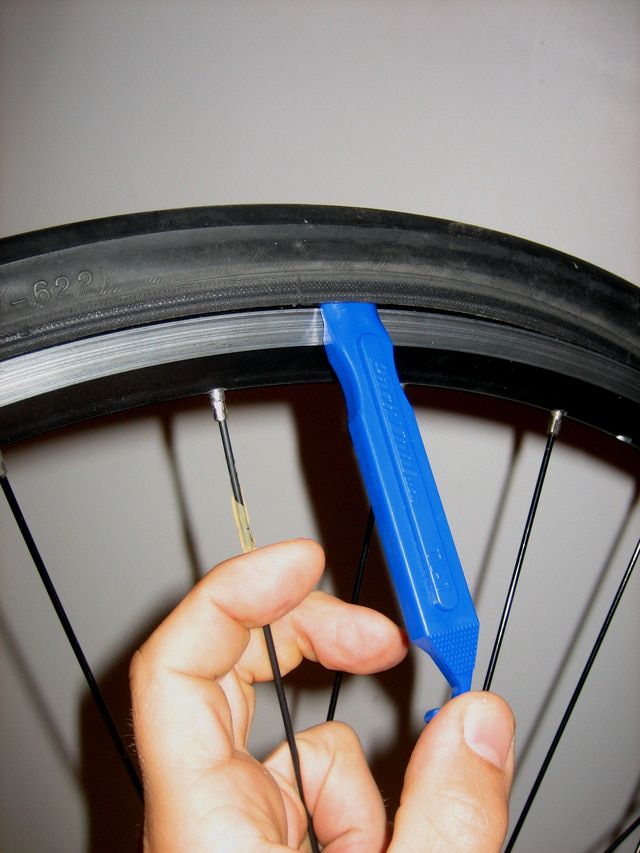 They are safer for the environment and safer for your guests (though again, no one should be directly in the clouds and inhaling the burnout gender reveal smoke!). Colored cornstarch also won’t damage your car and should wash off easily.
They are safer for the environment and safer for your guests (though again, no one should be directly in the clouds and inhaling the burnout gender reveal smoke!). Colored cornstarch also won’t damage your car and should wash off easily.
Burnout gender reveal powder is usually just cornstarch mixed with concentrated food coloring. This may leave you wondering… why don’t I just make it myself? A DIY gender reveal burnout is bound to be cheaper, right?
You could, and I even have a tutorial on how to DIY gender reveal powder at home. But it takes a chunk of your time, it’s pretty messy, and it has the potential to go wrong. It’s also really difficult to get the cornstarch back to as fine a powder as it once was (you have to add water to color it). Professional companies are the best at that part!
For these reasons, I recommend you just buy premade colored powder packs. These companies have been making this stuff for years (even before gender reveals were popular) and you’ll know it’s properly colored, dried, and sifted to create the perfect cloud effect.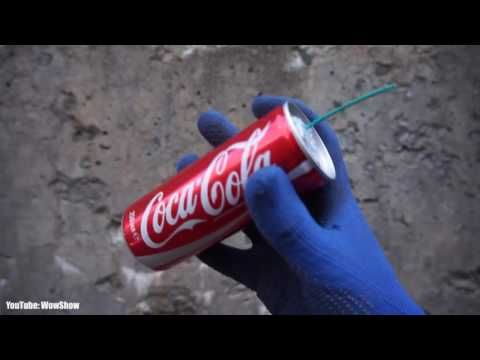
Most packaged gender reveal burnout packs include one pound of powder per bag. Two bags (two pounds) of powder should be plenty for your gender reveal if you’re doing a rolling burnout.
If your vehicle is better suited to a standing burnout, you may want to use four bags (four pounds) of powder, directly sticking two bags to each tire. (Many products are designed with this in mind – you simply peel off a sticker and slap the adhesive part onto the tire.) One pack may decide to fly off before busting under the tire.
via ellepons_design on InstagramI’m going to walk you through a couple of scenarios of how to do a gender reveal burnout. Blackout gender reveal bags can be used in a burnout a few different ways, depending on your vehicle. These are the three methods for using them, and you’ll need to figure out which one applies to your car:

If you’ve never done a burnout before (though I really think you should know how to do one already before attempting one at a gender reveal), this is how it’s achieved:
If your vehicle is an RWD manual transmission, this is what you do:

If your vehicle is an automatic with rear-wheel drive, you’ll need to do something like this:
No matter what car you’re using and what kind of burnout you’re going for, the key is to practice it first. Nothing’s more disappointing than a failed gender reveal burnout where the bag just pops but the powder doesn’t get thrown back in a big, beautiful blue or pink cloud.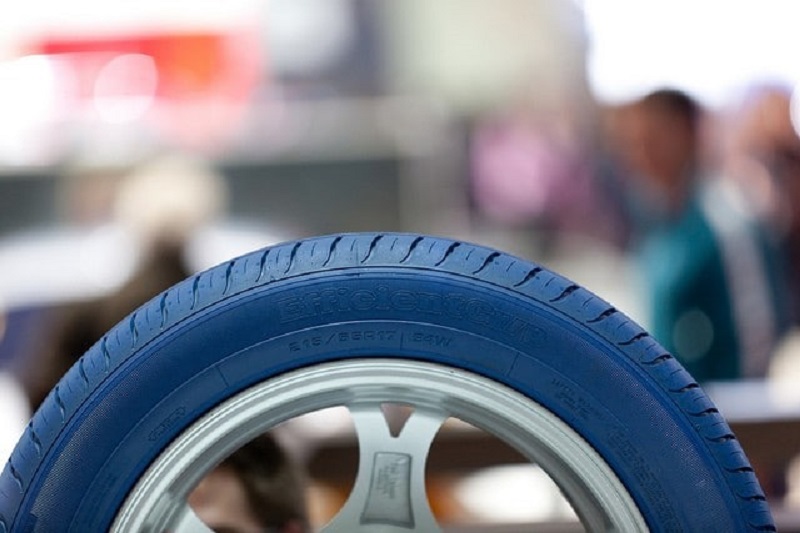
This video is a great example of where you should place your powder bags in front of the tire ahead of a rolling burnout in order to get the best effect.
If the parents-to-be are more into motorcycles than fast cars, you may be wondering if you can do a motorcycle burnout gender reveal. The answer is yes – but safety is even more important if you’re going to attempt it.
A motorcycle burnout should only be attempted by a professional/someone who has experience doing them on the chosen motorcycle. Otherwise, you run the risk of an accidental wheelie and your motorcycle possibly falling on top of you. Your brakes could even catch on fire.
You’ll treat a motorcycle burnout similarly to a standing burnout in a vehicle. You’ll want to have two one-pound bags of gender reveal powder that can adhere directly to the back tire of the motorcycle.
This is how to do a burnout on a motorcycle:

Now you know how to do a gender reveal burnout with powder!
This is actually the easiest and safest method of all for using gender reveal powder. The reason people tend to prefer doing burnouts is that the dust cloud is usually bigger and shoots up into the air instead of straight behind the vehicle.
Furthermore, putting gender reveal powder in your exhaust pipe means you can do this type of reveal with any vehicle – as long as it has an exhaust pipe. It won’t matter if your car, truck, or motorcycle is automatic or manual, front-wheel drive or rear-wheel drive. The powder will still shoot out of the exhaust pipe!
It won’t matter if your car, truck, or motorcycle is automatic or manual, front-wheel drive or rear-wheel drive. The powder will still shoot out of the exhaust pipe!
To put the powder in the exhaust pipe, someone who already knows the gender will need to open the packages of powder and funnel it into the exhaust. It doesn’t have to go in very far, and you can put a tissue or lightweight paper towel in the pipe afterward to help conceal the powder until it’s time for the reveal.
Keep in mind that the car will need to already be in place wherever you want to do the reveal because once the car starts, the powder will come out. This method also tends to cause some powder to fall on the ground during insertion, so you’ll want to be able to easily clean up or conceal any colored powder that’s in eyesight to the partygoers.
The angle of your exhaust pipe can make it difficult to put the powder inside, but as long as the pipe is long enough, it’s never really impossible.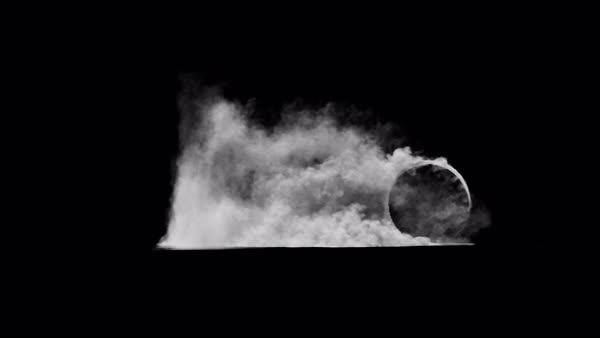 This video shows one method for inserting powder into an exhaust pipe that points down to the ground:
This video shows one method for inserting powder into an exhaust pipe that points down to the ground:
Once the powder is in the exhaust and you’re ready to do your gender reveal, all you have to do is leave your vehicle in park (I’d lock the parking brake just for good measure), then mash the gas pedal right as you’re starting the car. Voila!
Be sure to use plenty of powder, because the dust cloud from this method doesn’t seem to last as long as the burnout method. Put at least two pounds of powder in the exhaust – three or four if it will safely fit. (Cornstarch powder should not hurt your muffler at all, and can be fully blown out with a drive around the block after the reveal.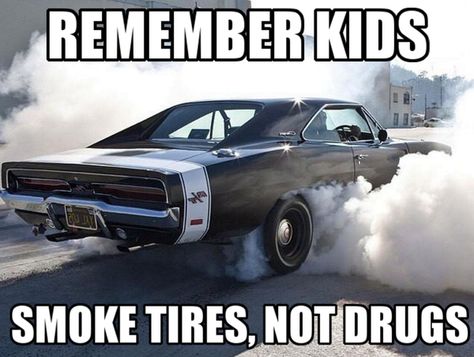 )
)
Once all of the colored powder has blown out, the exhaust smoke may just be white or black (if you can see it at all), and you don’t want anyone to miss the important part!
This post may contain affiliate links. If you make a purchase after clicking one, I may receive a small commission at no cost to you.
You don’t need to look any further than Amazon for a burnout gender reveal kit. Multiple brands and sellers offer brightly colored powder in one-pound blackout bags (so no one can see what color is inside!). They typically come in sets of two one-pound bags per order so you can use one for each wheel.
Most of these bags will come with double-sided tape on them so they are easy to stick to tires for a standing burnout. You just peel the sticker covering the tape off and slap it on the tires. Even if you’re doing a rolling burnout, you should remove the sticker so that once the tire does land on the bag, it will stay with the tire and not get flung away before it busts.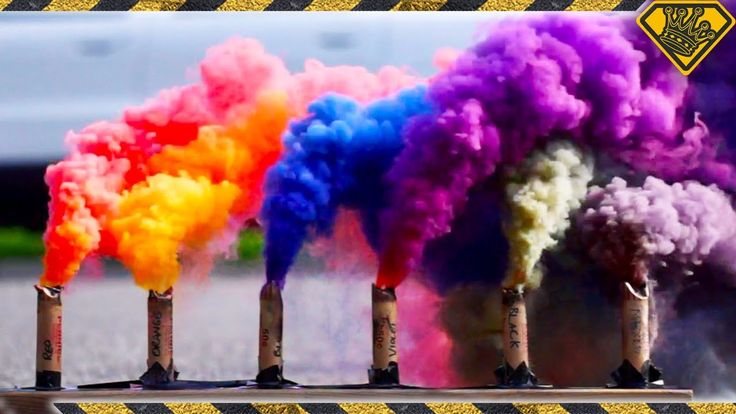
If your bags do not have sticker tape on them for some reason, the best gender reveal burnout tape for attaching it to your vehicle would be something strong but not too strong, like Duck Brand packing tape.
Whether you plan on doing a standing burnout, doing a rolling burnout, or stuffing the powder in your exhaust, I recommend buying at least four bags of powder, and 6-8 if you can afford it. A test run is always advisable because this is a big moment for the parents-to-be and their families!
Below are the brands and sellers on Amazon I recommend for getting your gender reveal tire burnout kit.
Once you know whether it’s a boy or a girl, it’s time to settle on a name! Check out our list of 1000 baby girl names or some baby boy names and their meanings (including the worst names you should avoid). And if mom-to-be isn’t already, it’s time to start using a stretch mark cream on her belly!
 According to the cause of the malfunction, smoke occurs either due to incomplete or improper combustion of fuel, or due to coolant entering the cylinders, or due to oil entering there, which gives the exhaust gases a characteristic color. Often, a malfunction of one system, which turns out to be a source of smoke, occurs due to malfunctions and defects in another. Here is a typical example: poor performance of the cooling system leads to overheating of the engine and, accordingly, burning of the piston rings. As a result, oil enters the cylinders, which causes smoke. It is better to start the search for the cause by comparing all the visible circumstances: the nature of the smoke itself, the observed accompanying phenomena, and the possible influence of the external environment. There is an opinion among experienced motorists that the color of the smoke from the exhaust pipe can determine what kind of engine malfunction is caused.
According to the cause of the malfunction, smoke occurs either due to incomplete or improper combustion of fuel, or due to coolant entering the cylinders, or due to oil entering there, which gives the exhaust gases a characteristic color. Often, a malfunction of one system, which turns out to be a source of smoke, occurs due to malfunctions and defects in another. Here is a typical example: poor performance of the cooling system leads to overheating of the engine and, accordingly, burning of the piston rings. As a result, oil enters the cylinders, which causes smoke. It is better to start the search for the cause by comparing all the visible circumstances: the nature of the smoke itself, the observed accompanying phenomena, and the possible influence of the external environment. There is an opinion among experienced motorists that the color of the smoke from the exhaust pipe can determine what kind of engine malfunction is caused.
Many people are familiar with the following situation: you start the engine after a long stop, and thick smoke comes out of the exhaust pipe.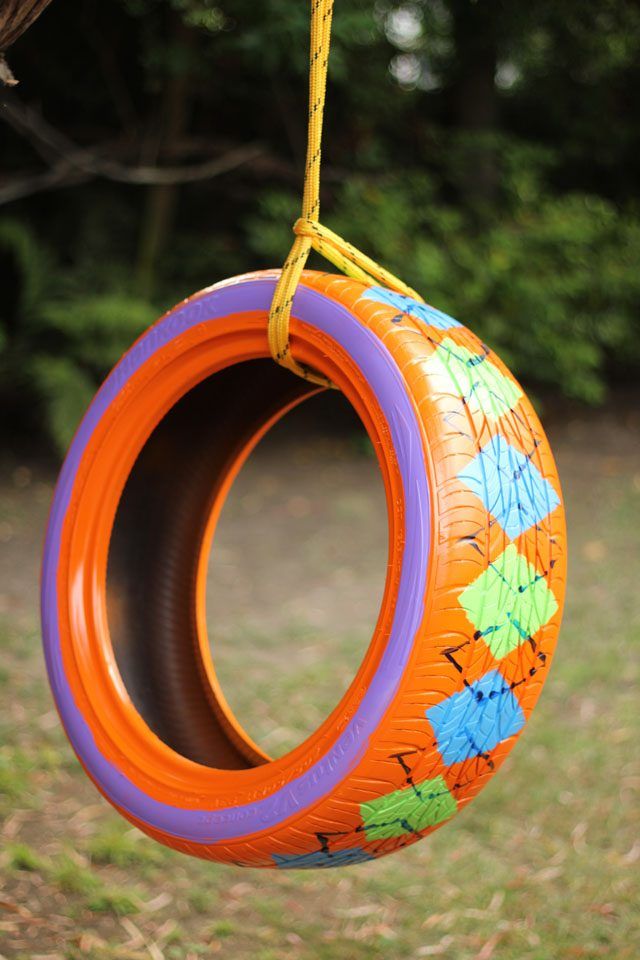 And even when warmed up, the amount and color of smoke may decrease, and when traveling, it will completely disappear. But more often it is different. The smoke continues, the color of the smoke persists and clearly indicates that there is some kind of malfunction in the heart of the car (engine). And the reason for this is not a long stop, but other reasons, and at the same time, long inactivity only served as an impetus that aggravated the problems or led to their sharp manifestation.
And even when warmed up, the amount and color of smoke may decrease, and when traveling, it will completely disappear. But more often it is different. The smoke continues, the color of the smoke persists and clearly indicates that there is some kind of malfunction in the heart of the car (engine). And the reason for this is not a long stop, but other reasons, and at the same time, long inactivity only served as an impetus that aggravated the problems or led to their sharp manifestation.
The smoke from the exhaust pipe can be white, blue, black and any shades in between. Color is an important diagnostic feature. The operation of the engine with increased smoke is often accompanied by other deviations from the norm, although sometimes subtle to which the driver pays attention only when smoke of one color or another appears. Therefore, such signs must be noticed and noted in order to more accurately assess the situation of serviceability and engine performance.
If you analyze possible malfunctions, it turns out that in many situations the smoke is the same color, although it has different causes. Let us first consider this issue in general terms, and then we will analyze each specific case in more detail and make this visual malfunction point us to more serious defects hidden from our eyes, i.e. by the color of the exhaust, we determine the condition of the car engine.
Let us first consider this issue in general terms, and then we will analyze each specific case in more detail and make this visual malfunction point us to more serious defects hidden from our eyes, i.e. by the color of the exhaust, we determine the condition of the car engine.
White smoke from the exhaust pipe is quite normal when warming up a cold engine. But keep in mind that this is not smoke, but steam. Water in a vaporous, vaporous state is a natural product of fuel combustion, this is normal and does not require any action. The fact is that in a cold exhaust system, the steam from the combustion of the fuel partially condenses while becoming visible, while water (condensate) usually appears on the edge of the exhaust pipe. As the system warms up, condensation decreases. The colder the environment, the denser, whiter and more visible the steam will be. At temperatures below -10 degrees Celsius, white vapor is also formed on a well-heated engine, and at frost at -20 .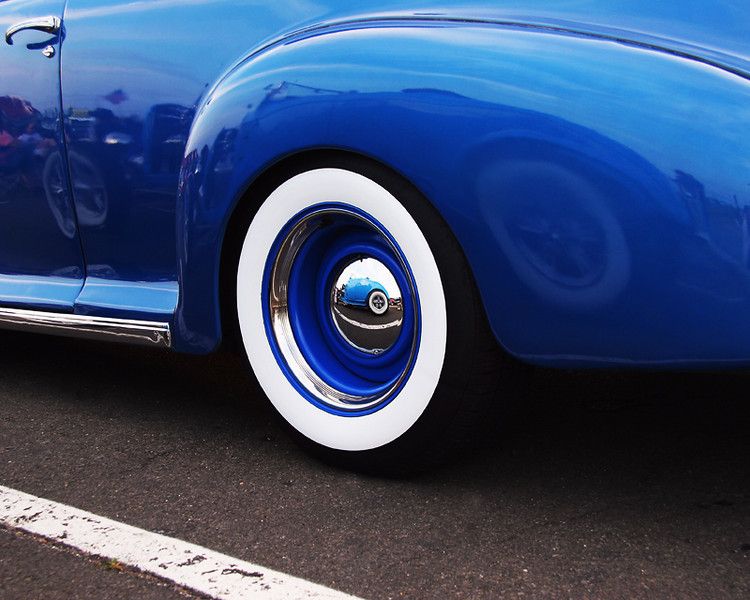 .. -25 degrees, the exhaust due to steam acquires a thick white color with a bluish tint. You can cite a familiar situation as an example - in winter, when large cars or buses drive away from a stop, they smoke so much that you have to slow down due to lack of visibility. The color and saturation of the steam is also affected by the humidity of the air: the higher it is, the thicker the steam. It should be noted that water vapor after exiting the exhaust pipe dissipates rather quickly and does not smell of anything.
.. -25 degrees, the exhaust due to steam acquires a thick white color with a bluish tint. You can cite a familiar situation as an example - in winter, when large cars or buses drive away from a stop, they smoke so much that you have to slow down due to lack of visibility. The color and saturation of the steam is also affected by the humidity of the air: the higher it is, the thicker the steam. It should be noted that water vapor after exiting the exhaust pipe dissipates rather quickly and does not smell of anything.
Constant white smoke in warm weather and on a well-heated engine may indicate, most often, that coolant (water, antifreeze, antifreeze) has entered the cylinders (a leaky cylinder head gasket may be a possible point of entry). In this case, the moisture in the coolant does not have time to completely evaporate during the combustion of the fuel, which causes thick white smoke (high density steam). In this case, the shade of the exhaust depends on the composition of the coolant, the weather and the color of the lighting of the surrounding space.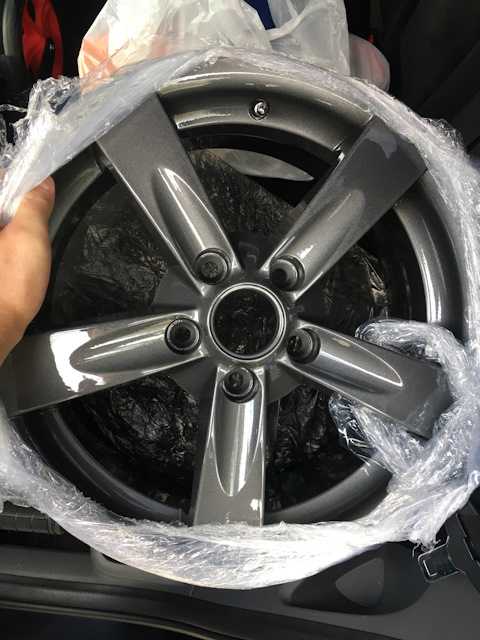 The shade of white smoke can be bluish, reminiscent of "oil" smoke, but it is still possible to distinguish if you look closely, water vapor dissipates quickly, to the point of invisibility, unlike "oil" smoke, in which a bluish fog remains in the air for a long time.
The shade of white smoke can be bluish, reminiscent of "oil" smoke, but it is still possible to distinguish if you look closely, water vapor dissipates quickly, to the point of invisibility, unlike "oil" smoke, in which a bluish fog remains in the air for a long time.
First of all, you should make sure that steam is coming out of the exhaust pipe, and not “oily” smoke. We perform a simple action - we warm up the engine to operating temperature, or even after a trip, briefly cover the exhaust pipe opening with a white, clean sheet of paper and see if the water from the sheet will gradually evaporate and leave no obvious greasy marks, while they will not be greasy to the touch. If there are obviously greasy, oily traces that do not disappear, the motor has a different problem that is not related to the leakage of coolant into the cylinders.
If there are no clearly oily traces left on the sheet, we continue the search.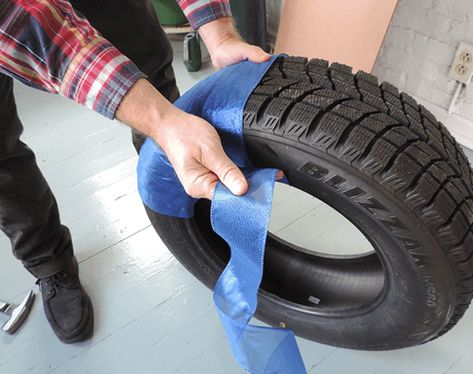 Fluid can enter the cylinder not only due to a damaged cylinder head gasket, but also due to cracks in the cylinder head or block. All these defects in the operation of the engine cause exhaust gases to enter the cooling system (in this case, the appearance of a gas plug in the cooling system is also possible), which, if detected, will indicate the problems described. Look into the radiator or expansion tank: if the coolant emits a clear smell of burning (exhaust gases) and / or there is a thin oil film on its surface, then the cause of white smoke is precisely the ingress of exhaust gases into the cooling system. In such cases, after starting a cold engine, the pressure in the cooling system immediately increases (it is easy to feel it with your hand by squeezing the upper radiator pipe), while an increase in the liquid level in the expansion tank is also observed. Moreover, this liquid level is unstable, gas bubbles may appear in the expansion tank.
Fluid can enter the cylinder not only due to a damaged cylinder head gasket, but also due to cracks in the cylinder head or block. All these defects in the operation of the engine cause exhaust gases to enter the cooling system (in this case, the appearance of a gas plug in the cooling system is also possible), which, if detected, will indicate the problems described. Look into the radiator or expansion tank: if the coolant emits a clear smell of burning (exhaust gases) and / or there is a thin oil film on its surface, then the cause of white smoke is precisely the ingress of exhaust gases into the cooling system. In such cases, after starting a cold engine, the pressure in the cooling system immediately increases (it is easy to feel it with your hand by squeezing the upper radiator pipe), while an increase in the liquid level in the expansion tank is also observed. Moreover, this liquid level is unstable, gas bubbles may appear in the expansion tank.
If the engine is turned off, the picture will change exactly the opposite. Fluid will begin to flow into the cylinder. Gradually, it will seep through the piston rings and fall into the oil, into the oil pan. On subsequent start-up, the oil and coolant mix, forming an emulsion that is light in color, regardless of oil production. The emulsion is not transparent, it makes the oil cloudy. Circulating through the lubrication system, such an emulsion leaves a characteristic light yellow-brown foam on the head cover and oil filler cap. Such foam is formed with a saturated emulsion, that is, if a crack or burnout has a large area. If the crack or burnout is insignificant, foam formation is still possible, even with a clear oil. If the leakage in the cylinder is significant, then the fluid, accumulating above the piston, can prevent the crankshaft from turning at the start at the first moment of launch. In especially severe cases, water hammer in the cylinder, deformation and breakage of the connecting rod are possible. Sometimes it is possible to detect a cylinder into which antifreeze is leaking by inspecting the spark plugs.
Fluid will begin to flow into the cylinder. Gradually, it will seep through the piston rings and fall into the oil, into the oil pan. On subsequent start-up, the oil and coolant mix, forming an emulsion that is light in color, regardless of oil production. The emulsion is not transparent, it makes the oil cloudy. Circulating through the lubrication system, such an emulsion leaves a characteristic light yellow-brown foam on the head cover and oil filler cap. Such foam is formed with a saturated emulsion, that is, if a crack or burnout has a large area. If the crack or burnout is insignificant, foam formation is still possible, even with a clear oil. If the leakage in the cylinder is significant, then the fluid, accumulating above the piston, can prevent the crankshaft from turning at the start at the first moment of launch. In especially severe cases, water hammer in the cylinder, deformation and breakage of the connecting rod are possible. Sometimes it is possible to detect a cylinder into which antifreeze is leaking by inspecting the spark plugs.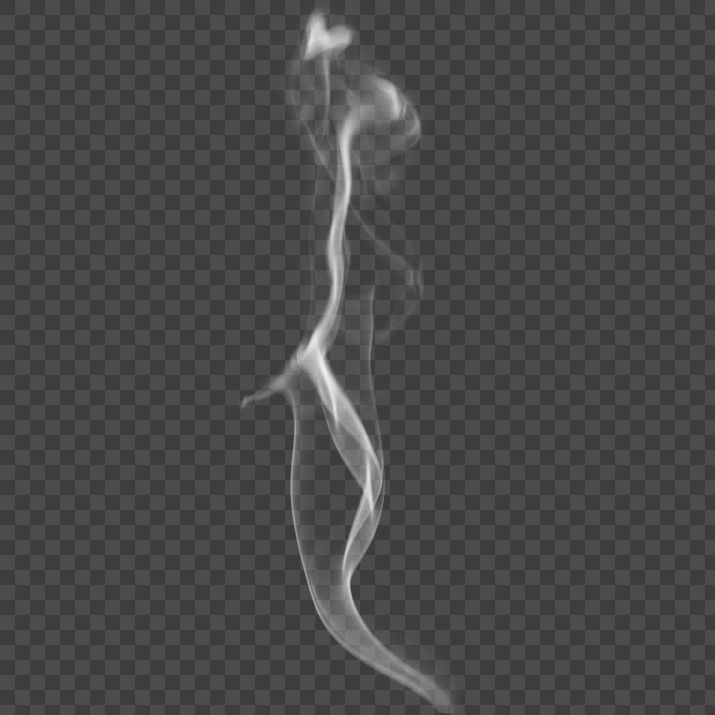 The candle will look like new - antifreeze literally launders it. If air under pressure is supplied to the cylinder through the candle channel (for example, through an adapter with a hose or a special leak tester), the liquid level in the expansion tank will begin to rise (when checking, it is necessary to turn the crankshaft to a position in which both valves are closed, put the car on brake and shift into gear). Further detection or repair of a malfunction is carried out with the removal of the cylinder head. The condition of the gasket, head and block planes should be assessed.
The candle will look like new - antifreeze literally launders it. If air under pressure is supplied to the cylinder through the candle channel (for example, through an adapter with a hose or a special leak tester), the liquid level in the expansion tank will begin to rise (when checking, it is necessary to turn the crankshaft to a position in which both valves are closed, put the car on brake and shift into gear). Further detection or repair of a malfunction is carried out with the removal of the cylinder head. The condition of the gasket, head and block planes should be assessed.
It should also be borne in mind that cylinder head gasket burnout is often accompanied by deformation of the head plane, especially if the defect was preceded by engine overheating. If no obvious defects are found, it is necessary to check the head for tightness under pressure. Most likely, a crack will be found on the wall of the combustion chamber: more often near the exhaust valve seat.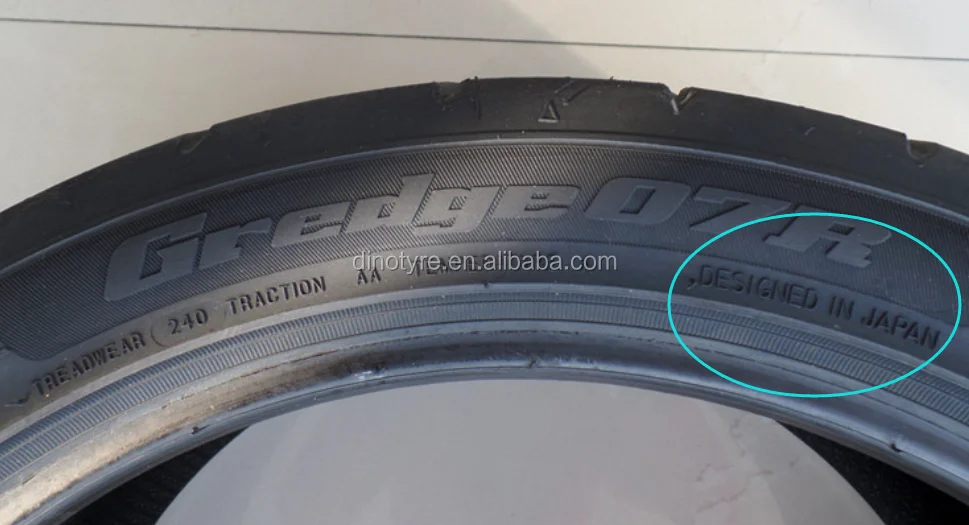 You should also carefully inspect the cylinder, lowering the piston to bottom dead center. A crack in the cylinder is a rare defect, but if it exists, it is not difficult to detect it. The edges of the crack diverge and often turn out to be polished piston rings. The ingress of coolant into the cylinder is also possible through the intake system, for example, due to the leakage of the intake manifold gasket, if it simultaneously seals the collector heating channels with coolant. In such cases, the pressure in the cooling system does not increase, there is no smell of exhaust gases, but the oil turns into an emulsion, while the coolant level decreases rapidly. These signs, as a rule, are enough to find a defect and not confuse it with the one described above, otherwise the block head will be removed in vain. All problems associated with white smoke from the exhaust pipe require not only the elimination of direct causes. Since defects are usually caused by engine overheating, it is necessary to check and eliminate malfunctions in the cooling system - it is possible that the thermostat, switch-on sensor, clutch or fan itself are not working, the radiator, its plug, hoses or connections are leaking.
You should also carefully inspect the cylinder, lowering the piston to bottom dead center. A crack in the cylinder is a rare defect, but if it exists, it is not difficult to detect it. The edges of the crack diverge and often turn out to be polished piston rings. The ingress of coolant into the cylinder is also possible through the intake system, for example, due to the leakage of the intake manifold gasket, if it simultaneously seals the collector heating channels with coolant. In such cases, the pressure in the cooling system does not increase, there is no smell of exhaust gases, but the oil turns into an emulsion, while the coolant level decreases rapidly. These signs, as a rule, are enough to find a defect and not confuse it with the one described above, otherwise the block head will be removed in vain. All problems associated with white smoke from the exhaust pipe require not only the elimination of direct causes. Since defects are usually caused by engine overheating, it is necessary to check and eliminate malfunctions in the cooling system - it is possible that the thermostat, switch-on sensor, clutch or fan itself are not working, the radiator, its plug, hoses or connections are leaking.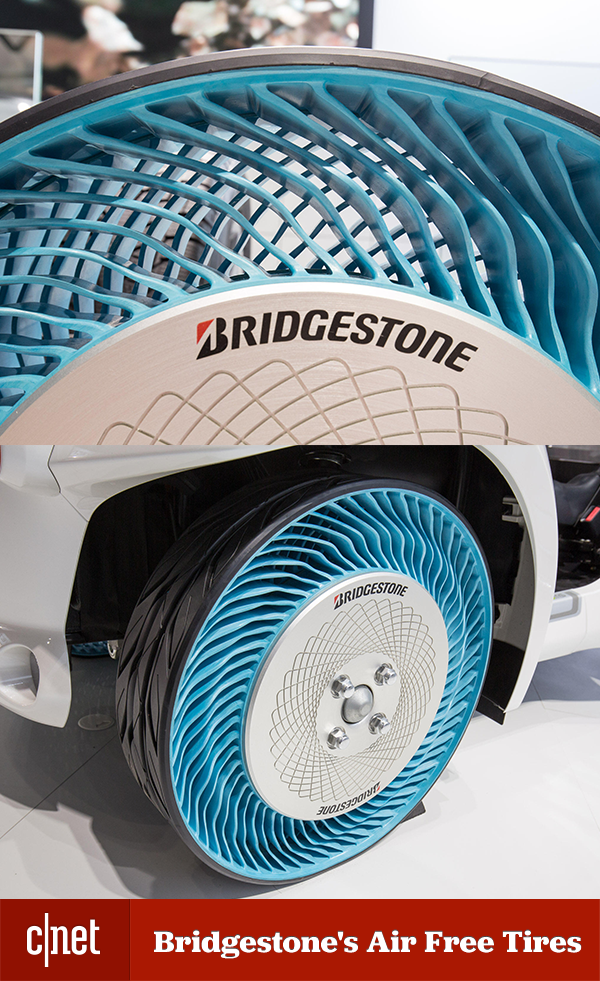 If white smoke and its accompanying defects are noticed, then the car cannot be operated. First, defects progress rapidly. And secondly, the operation of the motor on an oil-in-water emulsion dramatically accelerates the wear of parts, and after several hundred kilometers, it is most likely impossible to do without a major overhaul.
If white smoke and its accompanying defects are noticed, then the car cannot be operated. First, defects progress rapidly. And secondly, the operation of the motor on an oil-in-water emulsion dramatically accelerates the wear of parts, and after several hundred kilometers, it is most likely impossible to do without a major overhaul.
The most likely cause of blue ("oil") smoke is oil getting into the engine cylinders. "Oil" smoke can have various color shades: from transparent blue to dense white-blue. It depends on the operating mode of the engine, the degree of its warming up and the amount of oil entering the cylinders, as well as the illumination and other factors. It is noteworthy that oil smoke, unlike steam, does not quickly dissipate in the air, and the paper test mentioned above gives greasy droplets flying out of the pipe along with the exhaust gases. It is also clear that oil smoke is accompanied by increased oil consumption.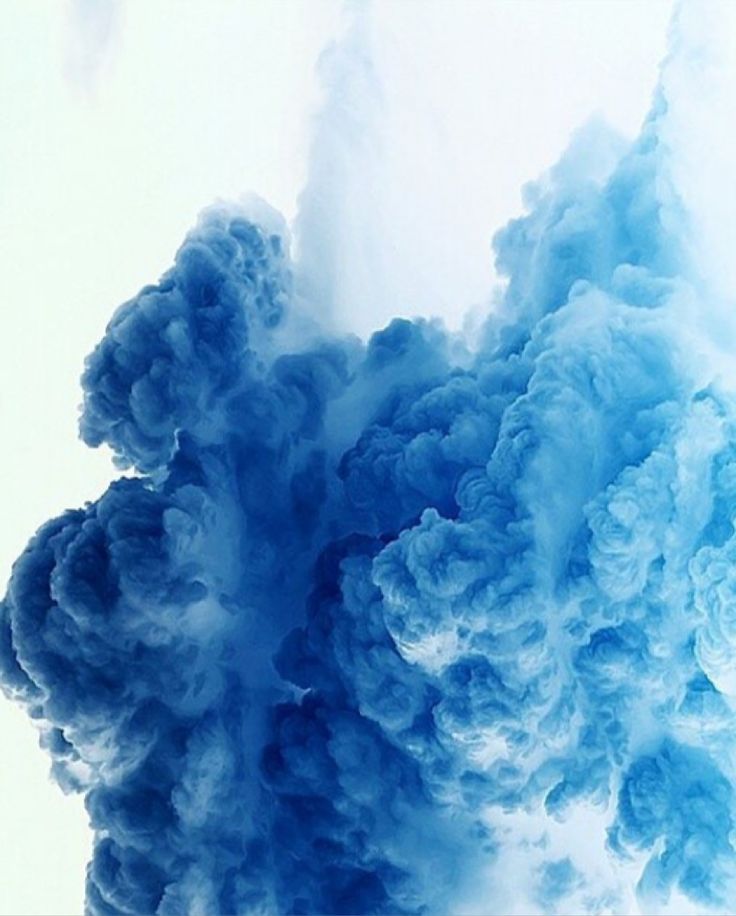 So, at a flow rate of about 0.5 l/100 km, blue smoke appears mainly in transient modes, and when it reaches 1.0 l/100 km, it also appears in uniform motion modes. By the way, in the latter case, in transient conditions, the oil smoke becomes thick blue-white. True, the owners of the most modern cars should be aware of the possible presence of a converter that is able to clean the exhaust gases from oil even at fairly high costs.
So, at a flow rate of about 0.5 l/100 km, blue smoke appears mainly in transient modes, and when it reaches 1.0 l/100 km, it also appears in uniform motion modes. By the way, in the latter case, in transient conditions, the oil smoke becomes thick blue-white. True, the owners of the most modern cars should be aware of the possible presence of a converter that is able to clean the exhaust gases from oil even at fairly high costs.
Oil can enter the combustion chambers (cylinders) in two ways: from below, through the piston rings, from above, through the gaps between the valve stems and guide bushings. The most likely reason for the appearance of blue exhaust is the wear of the parts of the cylinder-piston group. The upper compression rings show wear not only on the outer surface in contact with the cylinder, but also on the end planes that perceive the pressure of gases in the cylinder. The grooves of these rings in the pistons may also be worn out. Large gaps in the grooves create a pumping effect. Even if the oil scraper rings are still normal, oil still enters the cylinders, since the upper rings continuously "pump" it from the bottom up.
Large gaps in the grooves create a pumping effect. Even if the oil scraper rings are still normal, oil still enters the cylinders, since the upper rings continuously "pump" it from the bottom up.
Cylinders wear out most of all in the stop zone of the upper ring when the piston reaches top dead center, and in the middle part they often acquire an oval shape. The deviation of the cylinder shape from the circumference worsens the sealing properties of the rings. Gaps usually form in the zone of locks, but their appearance in other places of the circumference is not excluded.
There are cases when, with a relatively good condition of the ring and piston, the surface of the cylinder is damaged. This happens, for example, with poor oil filtration, when abrasive particles get between the skirt of the piston and the cylinder, and scratches appear on the cylinder. A similar situation is real after a long stop, when traces of corrosion may appear on the surface of the cylinders and rings. It will take a significant amount of time to smooth out these defects and the mutual running-in of parts (if they can run in at all).
It will take a significant amount of time to smooth out these defects and the mutual running-in of parts (if they can run in at all).
The same effect often occurs when engine repair technology is not correct, when the surface of the remanufactured cylinder is too rough or the cylinder has an irregular shape, or they used poor quality pistons or piston rings that did not meet the engine specifications. In such cases, as a rule, normal operation of the engine should not be expected.
The wear of the cylinder-piston group is often accompanied by a loss of compression and an increase in pressure in the crankcase, which are determined by the corresponding devices (compressometer, leak tester, etc.). However, remember that a large amount of oil entering the cylinders seals the gaps in the mating parts well. If the gaps are not too large, then the result of the compression evaluation may be quite normal, sometimes even closer to the upper limit. It is this circumstance that confuses the search for specific causes of oily blue smoke.
When there is no large wear of parts, then blue or blue-white smoke is clearly observed only when the engine is running in warm-up mode, gradually decreases and even disappears altogether. The reason is simple: when heated, the parts expand and take up more space in which they are more strongly pressed against each other. With excessive wear, the picture is reversed: the amount of smoke on a warm engine will increase, since it is easier for hot oil, which has a low viscosity, to enter the cylinder through worn parts.
It is always easier to identify a malfunction if it is associated with more severe forms of wear or even breakage of parts. Thus, significant knocking can occur, which leads to damage to the bridges between the rings on the pistons, at least damage to the rings themselves is most likely. Severe overheating of the engine causes deformation of the piston skirt, a large gap is formed between the piston and the cylinder. The deformed piston warps, disrupting the operation of the rings.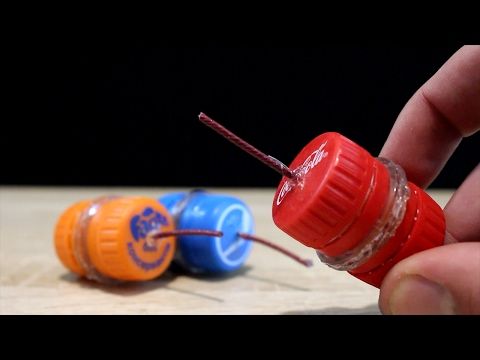 The same result is possible when the connecting rod is deformed, for example, due to water hammer when water enters the cylinder or after a belt breaks and the piston strikes an unclosed valve.
The same result is possible when the connecting rod is deformed, for example, due to water hammer when water enters the cylinder or after a belt breaks and the piston strikes an unclosed valve.
The use of low-quality oil can lead to burning or sticking of the rings in the piston grooves. The use of poor quality oil can cause the rings to stick and stick in the piston grooves. And due to prolonged glow ignition, the rings can simply be rolled in grooves with a complete loss of mobility.
The above defects usually do not occur in all cylinders at once. Finding a failed cylinder is easy by comparing the condition of the spark plugs and compression plugs in different cylinders. Moreover, such defects are often accompanied by various kinds of noises and knocks that change with engine speed, load and degree of engine warm-up, as well as unstable engine operation due to cylinder shutdown (especially during cold start). A common group of malfunctions that cause oil smoke and oil consumption is associated with wear of valve stems and guide bushings, as well as wear, mechanical defects and aging (loss of elasticity) of valve stem seals.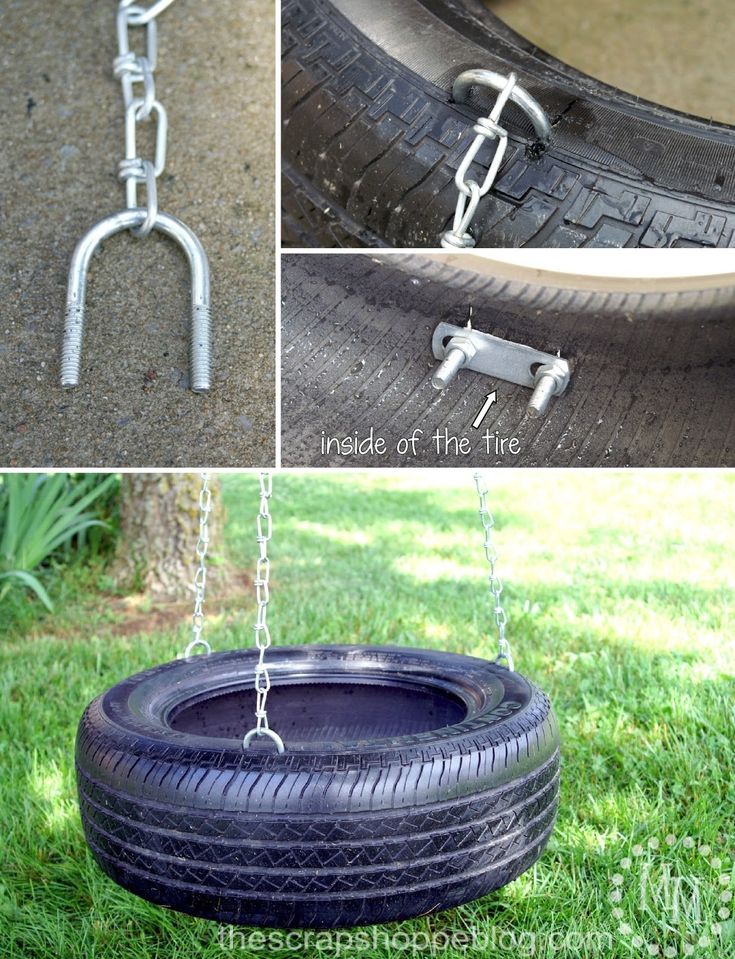 These defects tend to produce a noticeable increase in engine smoke as the engine warms up, as thinned hot oil passes through gaps between worn parts much more easily. In addition, the ingress of oil into the cylinders increases at idle and during engine braking. In these modes, a large vacuum occurs in the intake manifold, and oil flows through the valve stems under the action of a pressure drop, accumulating on the walls of parts and in the exhaust system. The subsequent opening of the throttle at the first moment sharply increases the density of blue oil smoke.
These defects tend to produce a noticeable increase in engine smoke as the engine warms up, as thinned hot oil passes through gaps between worn parts much more easily. In addition, the ingress of oil into the cylinders increases at idle and during engine braking. In these modes, a large vacuum occurs in the intake manifold, and oil flows through the valve stems under the action of a pressure drop, accumulating on the walls of parts and in the exhaust system. The subsequent opening of the throttle at the first moment sharply increases the density of blue oil smoke.
In turbocharged engines, oil consumption accompanied by blue smoke is possible due to a malfunction of the turbocharger, in particular, worn bearings and rotor seals. The wear of the compressor front bearing seal gives a picture similar to the failure of the valve stem seals (including oil soot on the candles), but at the same time a puddle of oil collects in the compressor inlet pipe. It is difficult to determine a turbine seal failure, since the oil enters directly into the exhaust system and burns out there.
In operation, blue smoke and oil consumption often appear when one of the cylinders is turned off due to an ignition malfunction or valve leaks. In the latter case, the smoke becomes white-blue, especially if the valve has a clear burnout. Such a defect is easily determined - the compression in this cylinder is insignificant or absent at all, and an abundant black deposit appears on the candle, often in the form of growths.
Black smoke from the exhaust pipe indicates a re-enrichment of the fuel-air mixture, and, consequently, a malfunction of the fuel supply system. Such smoke is usually clearly visible against a light background behind the car and represents soot particles - products of incomplete combustion of fuel.
Black smoke is often accompanied by high fuel consumption, poor starting, unstable engine operation, high exhaust toxicity, and often loss of power due to a suboptimal air-fuel mixture.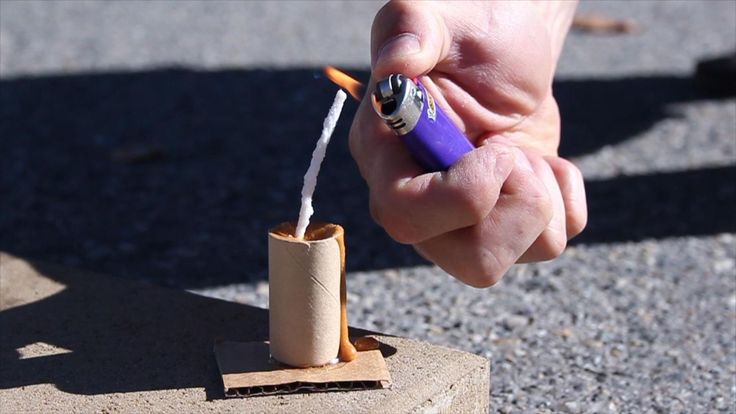 In carbureted engines, black smoke is usually caused by an overflow in the float chamber due to a defective needle valve or due to coking of the air jets.
In carbureted engines, black smoke is usually caused by an overflow in the float chamber due to a defective needle valve or due to coking of the air jets.
In gasoline engines with electronic fuel injection, over-enrichment of the mixture appears, as a rule, in case of malfunction and failure of various sensors (oxygen, air flow, etc.), as well as in case of leakage of injectors. The latter case is dangerous due to water hammer in the cylinder at startup with all the consequences mentioned above. The bottom line is that a lot of fuel can flow into the cylinder through a faulty nozzle on an idle engine, and it will not allow the piston to approach top dead center. In diesel engines, black smoke sometimes appears not only when there is a malfunction in the high-pressure pump, but also with a large injection advance angle. A common feature of the operation modes of gasoline engines on a re-enriched mixture is increased wear and even scuffing of parts of the cylinder-piston group, since excess fuel washes oil from the cylinder walls and worsens lubrication. In addition, fuel enters the oil and dilutes it, worsening lubrication conditions in other related engine parts. In some cases, this thinning is so great that the oil level in the crankcase (more precisely, the oil-fuel mixture) rises significantly. Diluted oil acquires a distinct smell of gasoline. It is obvious that the operation of an engine with such malfunctions is not only difficult, but also highly undesirable, since it quickly leads to new, much more serious troubles.
In addition, fuel enters the oil and dilutes it, worsening lubrication conditions in other related engine parts. In some cases, this thinning is so great that the oil level in the crankcase (more precisely, the oil-fuel mixture) rises significantly. Diluted oil acquires a distinct smell of gasoline. It is obvious that the operation of an engine with such malfunctions is not only difficult, but also highly undesirable, since it quickly leads to new, much more serious troubles.
So, black smoke tells us about a rich fuel mixture. In turn, this entails failures in the power supply system or ignition, or in a malfunction of the fuel injection control. The black smoke from their exhaust pipe is the result of improper combustion of the combustible mixture. It can be clearly seen in daylight, small particles of soot will be visible.
By the way, black smoke from the exhaust pipe is often accompanied by an increased consumption of gasoline, as well as an increase in the concentration and toxicity of exhaust gases, the engine does not work correctly - it is unstable, it does not start well, and also often leads to a deterioration in the dynamic qualities of the car.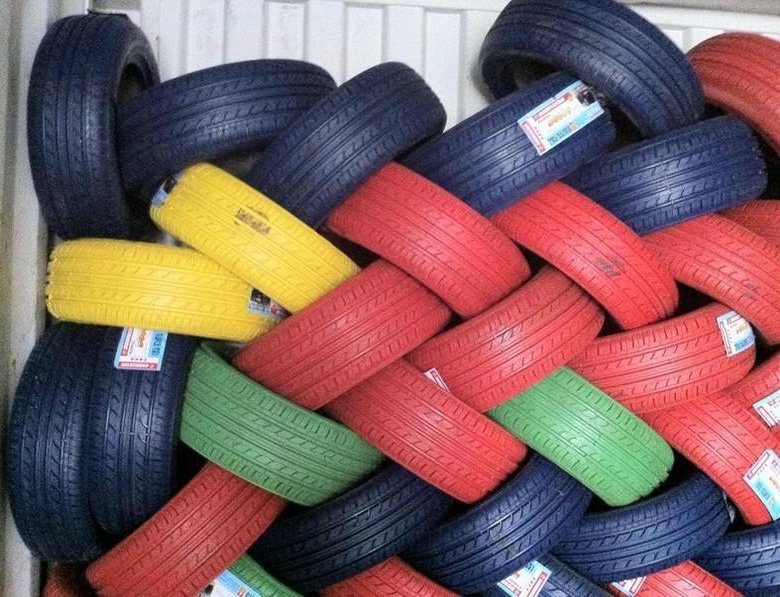 In carburetor engines, as already mentioned above, you can find out the problem from this article - a rich fuel mixture.
In carburetor engines, as already mentioned above, you can find out the problem from this article - a rich fuel mixture.
Black smoke from the exhaust pipe of injection engines often appears due to a malfunction of the oxygen sensor, air flow sensor, etc. Another common malfunction with an enriched mixture is leaking injectors. By the way, if the nozzles are not tight, water hammer is possible. A leaky injector is a very dangerous thing. Because, even when the engine is not running, a large amount of fuel can leak into the cylinder, and the piston will not be able to rise to a dead center.
Now let's talk about black smoke from the exhaust of diesel engines. The cause of black smoke may be a malfunction of the high pressure pump or an incorrect injection advance angle. For all engines with an enriched mixture, increased wear of the cylinder-piston group is characteristic. This is due to poor lubrication of the cylinder-piston group, because excess fuel washes oil from the cylinder walls.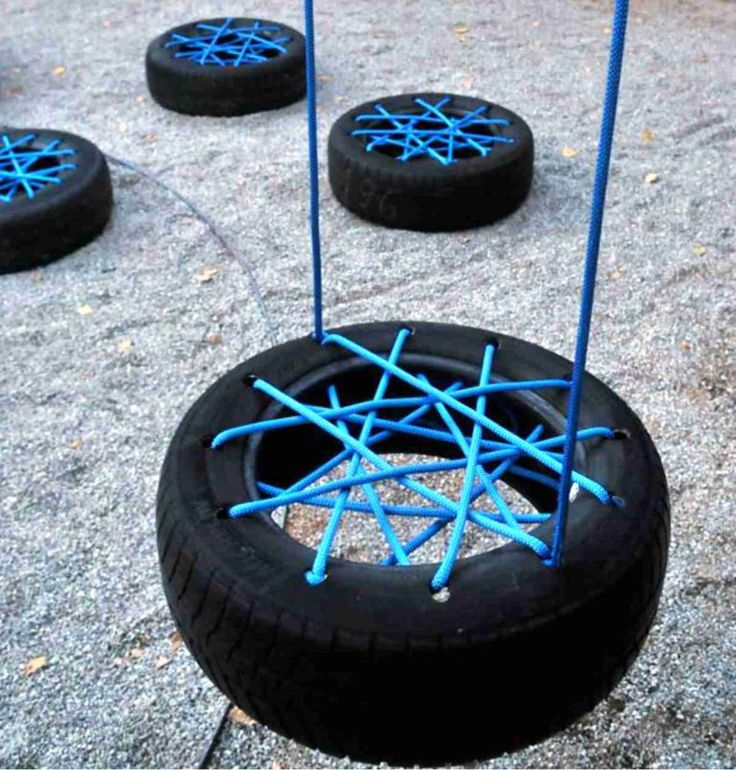 Also, oil, when mixed with gasoline, impairs the lubrication of all other engine parts. Do not delay repairs if you find black smoke from the car's exhaust pipe.
Also, oil, when mixed with gasoline, impairs the lubrication of all other engine parts. Do not delay repairs if you find black smoke from the car's exhaust pipe.
You can choose the engine for your car on our website
Back to the list of news
Author: Mikhail Balandin
It is not for nothing that diesel is often called savings in installments: if it really often costs the first owner of a car cheaper than gasoline due to fuel efficiency, then the next owner often has to pay for this savings. Yes, unfortunately, the age-related problems of diesel engines are quite expensive, and their solution is a thankless task. How to protect yourself from having to pay for someone else's loan? Carefully check the condition of such a motor before buying a car in the secondary market.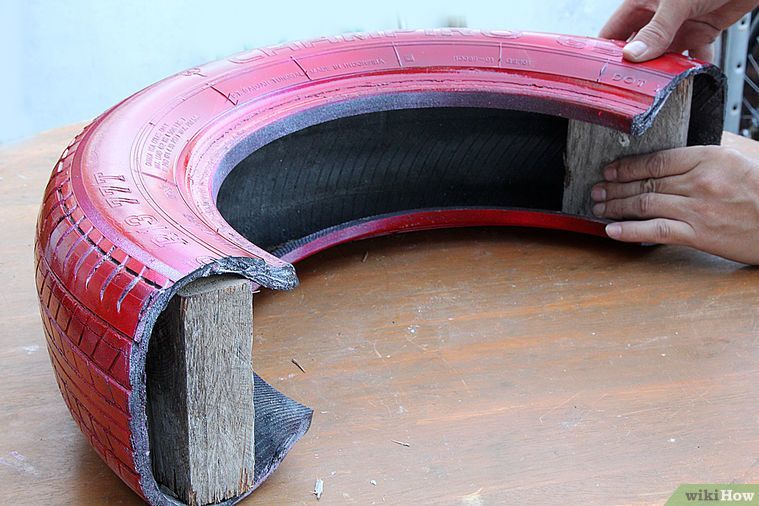
Of course, in general terms, the inspection of a gasoline and diesel engine is not very different: you need to look so that the engine does not leak oil and antifreeze, so that the antifreeze in the expansion tank is level, so that it is normal oil level so that there are no extraneous sounds. But due to the absence of the ignition system as such and the features of the fuel equipment, it is more difficult to assess the residual life of a diesel engine. But it’s easier to refuse it: it’s enough to see only gray smoke. Or black. Or is it still white?
The main feature of diesel cars is the mileage, which is usually higher than that of the same cars with gasoline engines. Diesel cars are almost always bought with the expectation of high mileage, otherwise their advantages do not have time to fully reveal. Accordingly, you need to be careful in the secondary market with a diesel engine: they like to twist the mileage very much. Often these cars are bought by those who spend a lot of time on the track, so it is difficult to estimate the mileage by the condition of the steering wheel, pedals and other “twists and turns” in the cabin. It is best, of course, to use a diagnostic scanner, and if not, then at least buy reports on the Internet, which are not lacking now. The cost of error in determining the true mileage can be large.
Often these cars are bought by those who spend a lot of time on the track, so it is difficult to estimate the mileage by the condition of the steering wheel, pedals and other “twists and turns” in the cabin. It is best, of course, to use a diagnostic scanner, and if not, then at least buy reports on the Internet, which are not lacking now. The cost of error in determining the true mileage can be large.
To be honest, I don't know why many of us still treat diesels with disdain. Now is not the time when a diesel car was like a rumbling smelly truck. A modern diesel engine (more precisely, a turbodiesel engine - atmospheric heavy-fuel engines have not been produced for a long time) - the thing is quite comfortable, high-torque and economical. And in some cases, a diesel engine on some model is, in principle, better than a gasoline one. For example, on many Peugeots and Citroens, where the EP6 gasoline is the only available engine (and far from the best in every respect), and PSA diesels are very good. Why not consider diesel in this case?
Why not consider diesel in this case?
It is clear that residents of the northern regions often do not consider diesel engines due to difficulties with winter starts, coupled with the frequent absence of normal winter diesel fuel. This is true: in some regions, gasoline will be better. But in general, for a modern diesel engine, the same -25 degrees is not a problem. Unless, of course, this modern diesel is serviceable.
Let's start from the beginning. As I said, the first inspection begins in exactly the same way as the inspection of a gasoline engine. But if most often in an atmospheric gasoline engine traces of oil can be found under the valve cover (leaking valve cover gaskets are a very popular reason for bargaining), then in a diesel engine you need to look for traces of fogging of the turbine and nozzles. The main reason for the increased consumption of diesel oil is just the turbine. It usually costs good money to repair (even if the cartridge can be replaced in it separately), so there can be no oil outside. Unfortunately, it is impossible to diagnose a turbine by eye. But after starting the engine, you can see that it needs repair. More on this below. For now, just make sure that no oil oozes out of it.
Unfortunately, it is impossible to diagnose a turbine by eye. But after starting the engine, you can see that it needs repair. More on this below. For now, just make sure that no oil oozes out of it.
Another important detail of the turbine is its originality. If they sell a car with a mileage of 100 thousand, and instead of a KKK or something like that there is a Chinese part, you need to check the validity of the mileage. Turbines don't usually fall apart this early.
The best way to determine the condition of the turbine will help the exhaust. It makes no sense to gas on a cold engine: unlike a gasoline engine, even a cold diesel has the right to smoke a little (even with a particulate filter). Therefore, we warm up the car (do not forget that in the case of a diesel engine it is better to do this on the go) and proceed to manipulate the gas pedal.
Need help here. The first time he must press the gas and hold a slightly increased speed for several seconds (2500-3000, which is a lot for any diesel engine).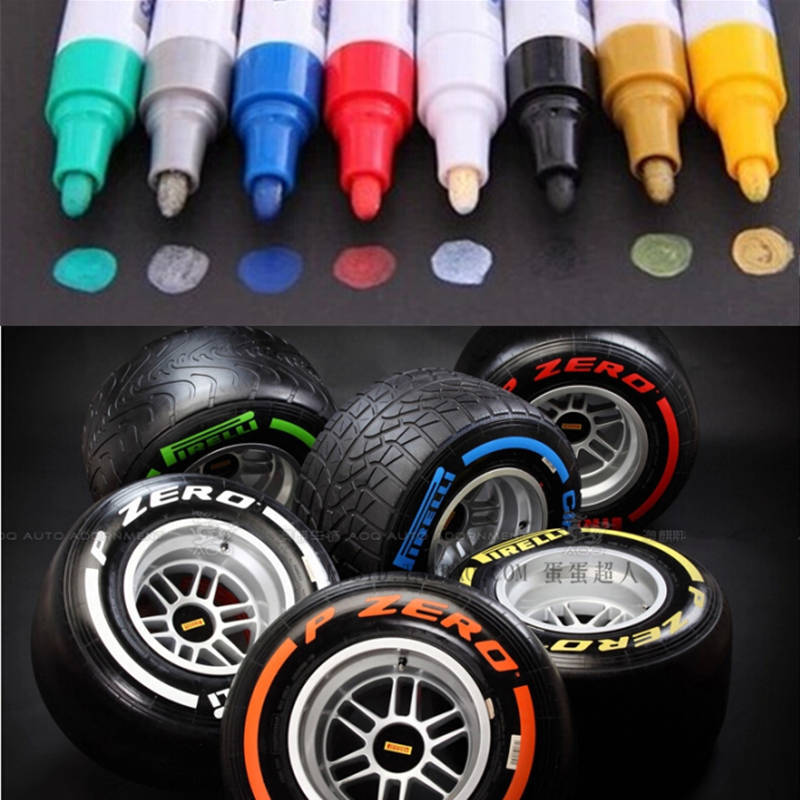 He threw smoke of any color - that's it, you can leave. On a warm diesel engine, there can be no smoke at these speeds for at least the first few seconds. More precisely, maybe, but this indicates at least a worn piston. If there is almost no smoke at this stage, you can go to the second one: press the gas pedal a few seconds harder so that the speed rises to at least 4000. And look at the smoke.
He threw smoke of any color - that's it, you can leave. On a warm diesel engine, there can be no smoke at these speeds for at least the first few seconds. More precisely, maybe, but this indicates at least a worn piston. If there is almost no smoke at this stage, you can go to the second one: press the gas pedal a few seconds harder so that the speed rises to at least 4000. And look at the smoke.
Oddly enough, but the most harmless result is black smoke. It means that unburned diesel fuel flies out of the pipe. There can be many reasons: from leaky pipes to current injectors and a dead turbine. If you wish, you can understand this issue further (at least check the tightness of the intake, there are motors in which the classic cause of such smoke is leaky intercooler pipes, and this is not too expensive to restore). If there is no desire to start life with this machine from repair, it is better to look for another option. In general, there is one rule here: the sooner black smoke falls in this case, the worse.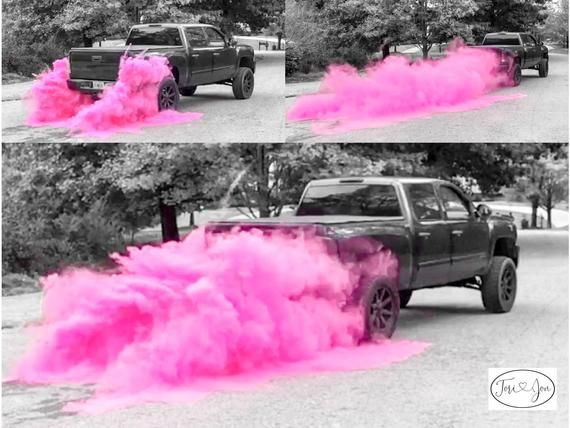
If after that you turn off the engine, start it again and see that the hot engine does not start immediately, then there is a high probability of a malfunction of the injectors that pour fuel. Or maybe TNVD. In general, a high-quality diagnosis is needed here.
Ideally, there should be no smoke after a few seconds of operation above 4000 rpm.
Blue smoke is known to be a sign of burning oil. That is, here the set of problems is somewhat different. Most likely, the turbine is faulty, but it may well be that the motor has already lost compression. In any case, blue smoke is worse than black, and the elimination of the causes of its appearance is usually more expensive.
Do not listen to those who say that the smoke appeared after some kind of chipping. Yes, this can really happen (if, for example, boost is incorrectly configured in the program), but this does not change the essence of the matter: there is a problem with boost, and it will have to be fixed.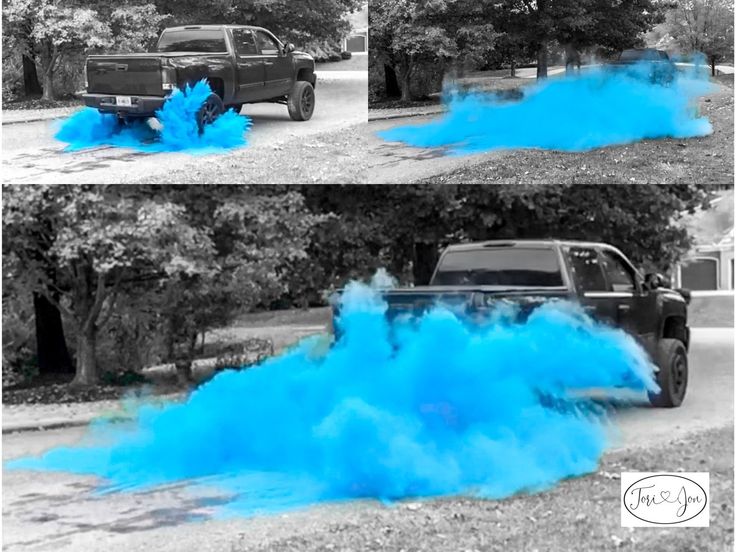
If, in addition to this blue smoke, the car has difficulty starting when cold, then the cause is more likely to be compression. Once again, we check the truth of the mileage.
By the way, if you are lucky to buy a car in the cold (not necessarily at a negative temperature, the candles usually turn on at +8), be sure to look at the dashboard for an indication of the operation of glow plugs. If the icon does not go out, there is a possibility that one of the candles is not working, and it is advisable to find out about this before buying a car. However, if the spark plugs are not working, a cold start will be difficult and noticeable.
Just in case, you can pull out the dipstick and try to find diesel fuel in the oil. If there is a problem with compression (read - with rings, including oil scraper rings), then there will be diesel fuel in the pan. Of course, modern diesel engines go into spacing less often than the old YaMZ, but it is also more difficult to stop them. It is already pointless to plug the air intake with a driver's jersey ... It is often impossible to stop the spread of such a diesel engine, especially on a car with an automatic transmission (there are more chances on the mechanics - you can try to overload the engine with a high gear). In a word, diesel fuel in oil is very bad.
It is already pointless to plug the air intake with a driver's jersey ... It is often impossible to stop the spread of such a diesel engine, especially on a car with an automatic transmission (there are more chances on the mechanics - you can try to overload the engine with a high gear). In a word, diesel fuel in oil is very bad.
Another good way to test a diesel is to drive your car behind the dealer's car and look at the color of the smoke in different driving modes.
Well, let's not forget about hearing. Everyone knows that a diesel engine works with a characteristic knock, but still this knock should not be annoying. Even injectors can knock well, and some of them (usually piezo injectors) are not repaired in principle and cost as much as half of the motor. Here it is desirable for a reference to have a known-good diesel of the same model in order to listen to it first and then compare.
We often use the phrase "typically diesel problems" in used diesel vehicles.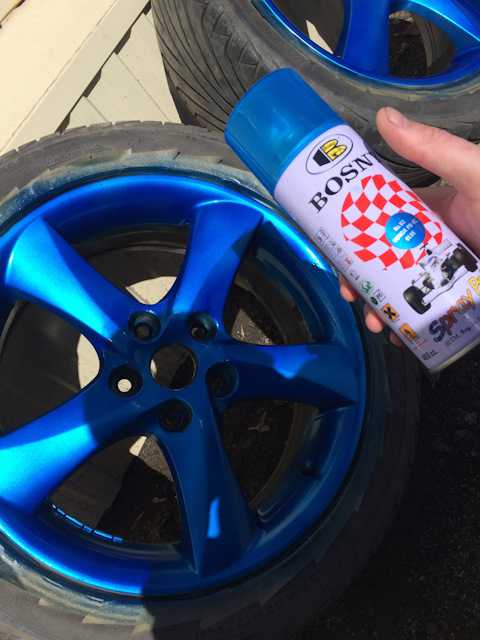 What's the deal with these family diesel issues? Turbine, injection pump, nozzles and "ecology systems". In this list, it is the ecology systems that most often fail, which are higher than the roof in modern diesel cars.
What's the deal with these family diesel issues? Turbine, injection pump, nozzles and "ecology systems". In this list, it is the ecology systems that most often fail, which are higher than the roof in modern diesel cars.
It's okay if the car's EGR is plugged. It is only important to understand how competently it is muffled. There can be no plugs from cans - this is a clear sign of a wrong and too cheap approach. Of course, there should be a cap, but it should be cut out of thick metal. In addition, EGR must be disabled by software. Often, instead of software disabling it, they simply erase the system diagnostics section, which is wrong in principle. But you won't see it with your eyes. Yes, and a regular scanner too: it simply will not show any errors. Here you need to read the firmware and poke around in its files, which, of course, no one will do before buying a car. This is bad, so you need to make sure that at least physically the EGR was dealt with in a non-barbaric way.
The same applies to the particulate filter (if fitted as standard). Although here the situation is slightly different: it would be better to leave the particulate filter on the car. If the EGR is jammed, if only because it heavily pollutes the intake, then the particulate filter does not pollute anything. Another thing is that it is often removed in a complex way, along with EGR. I won’t talk about whether it’s good or bad, but I’ll note that if EGR in samples at idle can be ruined even for 30 thousand mileage, then the particulate filter lives longer. Therefore, again, we look at the mileage: if the seller convinces that the mileage of the car is 70 thousand kilometers, and there is no longer a particulate filter, it is likely that the mileage is noticeably higher. Well, or that they serviced the car somehow, which is even worse.
Although here the situation is slightly different: it would be better to leave the particulate filter on the car. If the EGR is jammed, if only because it heavily pollutes the intake, then the particulate filter does not pollute anything. Another thing is that it is often removed in a complex way, along with EGR. I won’t talk about whether it’s good or bad, but I’ll note that if EGR in samples at idle can be ruined even for 30 thousand mileage, then the particulate filter lives longer. Therefore, again, we look at the mileage: if the seller convinces that the mileage of the car is 70 thousand kilometers, and there is no longer a particulate filter, it is likely that the mileage is noticeably higher. Well, or that they serviced the car somehow, which is even worse.
Another environmental system in diesel is urea. Many get rid of it so as not to buy a reagent. In this case, a flashing is also required, so you need to look where it was done. If in garages, then, most likely, it was done crookedly, because it is rather difficult to programmatically remove urea.
If the AdBlue system (aka SCR and everything else) is on the car, you need to check how all its components work. Here, some things are obscenely expensive, so it is better to entrust the diagnosis to professionals. Even such a seemingly trifling thing as an error in heating the urea tank on some Mercedes will require investments from a three-digit amount, so pickiness does not hurt. And if the heating does not work, but you need to remember that the urea solution freezes at -11 degrees, so you can only ride in the summer.
Diesel is much more serious about maintenance than petrol. A diesel car that has left the dealership is often killed by savings in the form of a rare replacement of the fuel filter, which is much more expensive on a diesel than on gasoline. And this kills both the injection pump and the injectors.
If there is a repair of injectors in the repair history, you need to find out what caused this entry. Often injector repairs are caused by wear of the injection pump (abrasive from the old pump kills the nozzles), and in this case it would be good to know what's wrong with the injection pump. It happens that the nozzles will be repaired, but they will regret the money for the repair of the high-pressure fuel pump. In this case, the nozzles die again, and the car is "drained".
It happens that the nozzles will be repaired, but they will regret the money for the repair of the high-pressure fuel pump. In this case, the nozzles die again, and the car is "drained".
If any heater is installed (Webasto or any other, or a simple electric afterburner), it should work. And at least some documents about the maintenance of the liquid heater should also be.
In general, you must always remember: a diesel engine is good only with very high quality service. If they served him somehow, he is able to drink blood much more than diesel fuel. A well-groomed diesel can please, a running one will only infuriate. And - for your considerable money.
Poll
Have you ever bought a car with a diesel engine?
Your vote
Total votes:
diesel practice
Test drives / Test drive Haval Dargo vs Mitsubishi Outlander: the dog is barking, the stranger is coming In the Haval dealership in the south of Moscow, life is in full swing: buyers look at cars, communicate with managers and sign some papers.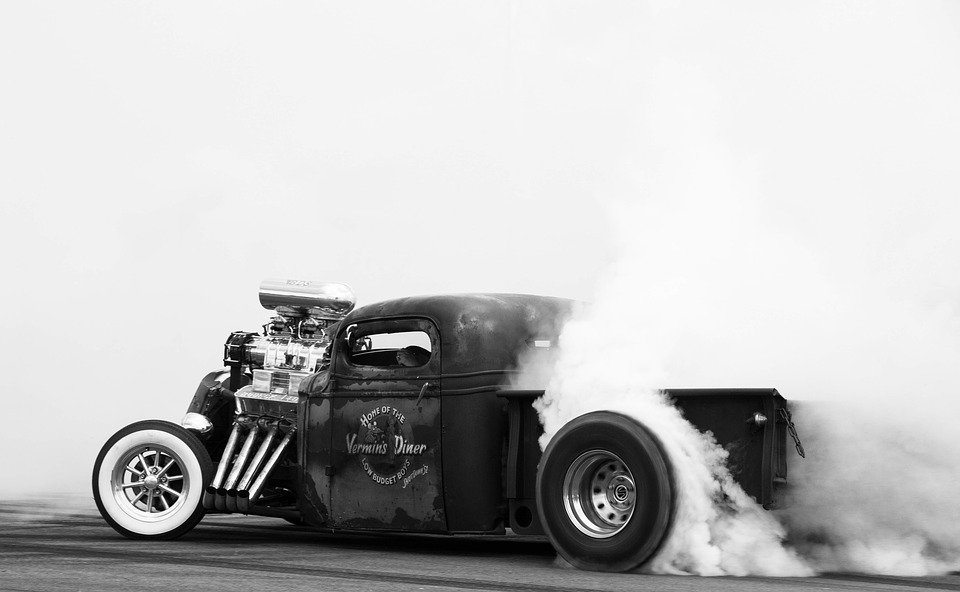 While I was waiting for the test Dargo, the same cross... 145797 197 09/13/2022
While I was waiting for the test Dargo, the same cross... 145797 197 09/13/2022
Test drives / Test drive Motor from Mercedes, emblem from Renault, assembly from Dacia: test drive of the European Logan 1.0 It would seem that what's new can be told about the second generation Renault Logan, known to every Russian taxi driver, as they say, up and down? However, this car has... 12443 ten 41 08/13/2022
Test drives / Test drive Geely Coolray vs Haval Jolion: Free Cheese? If! Do you want to buy a car today with a full warranty, on credit at an adequate rate, without wild dealer markups? Now this is still a task, because a full-fledged chain of "representation - s.